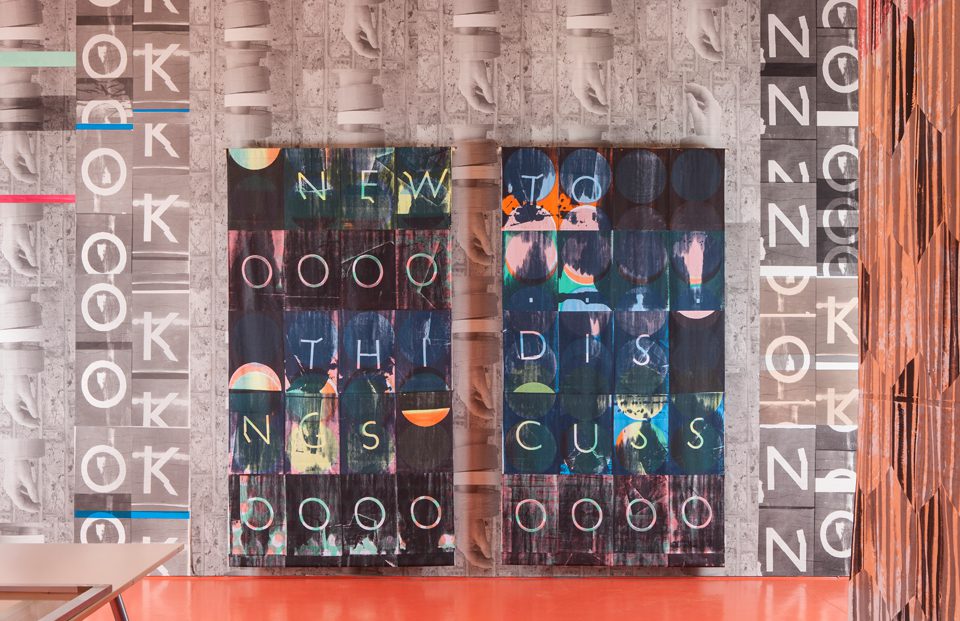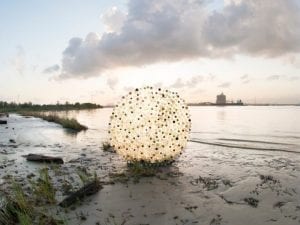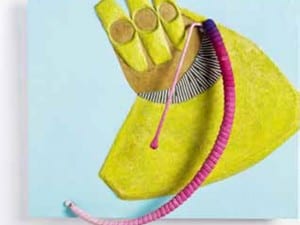Inspired by educator and activist Corita Kent, Ciara Phillips (b. 1976) uses multifaceted techniques to interact with other artists, designers and local community groups. She has been nominated for the Turner Prize 2014 for her solo exhibition at The Showroom, London, and her work is currently on display at Tate Britain until 4 January. www.tate.org.uk.
You work with a variety of printing methods and forms. What is your methodology?
Each medium has its own language, history and set of references that are specific to it and I like to think about, and work with this principal. For my undergraduate degree, I studied painting, printmaking and sculpture, and during my final year I worked collaboratively with two other artists in my class. We tried several different ways of making art – from painting and printing, to creating installations, and organising events and performances. We joined up our studio spaces so that we had somewhere to hang out and work on shared projects. It was a really exciting and productive year, and I’ve maintained an enthusiasm for working in an interdisciplinary way (and with other people) ever since.
Is there anyone in particular, you’d like to collaborate with that you haven’t yet?
The work that I’ve made in partnership has always been a product of circumstance and within a context. I’ve often worked with friends, but I’ve also collaborated with other artists and groups that have been suggested by the institutions I’ve exhibited with. Being open to working with people I don’t know personally, but who are recommended has generated some fantastic joint ventures. I’ve yet to put together a list of dream collaborators, but you’ve got me thinking.
You work with community groups; how important is it for public wider public engagement?
I think it’s hugely important that everyone has access to art – it’s part of a shared cultural heritage that we all have a right to. However, my output with community groups isn’t just about access; it’s about sharing ideas through the process of working together on joint outcomes. This happens best when the group has a sense of a shared identity, when they have a position and share a common goal. It’s also important that they want to connect with me, and that we have enough time to develop ideas together.
When beginning a new piece, do you start with an initial idea or do you like your projects to evolve as you work alongside other people?
When I’m working with other people I set a very loose framework to get started and then let the process of creating together take over. It’s more surprising and less dogmatic. This is similar when it comes to my own work; I start with some ideas but allow the process of making to develop or interrupt these. I like screenprinting because it involves constructing in layers – it gives me time to think as I go along. It’s a process that helps me to generate ideas and I like the element of the unknown. I never tire of lifting up the screen after printing to see what has happened.
When you install your work, how does the gallery space influence the layout?
I always consider the gallery that my art appears in. I think about the way that people will encounter the work, the physical experience of it, and how connections are made between the pieces across the space. Each new context presents new things to think about – I enjoy having to deal with factors that are external to the work and consider how they might impact on its reading.
So far, how has your nomination for the Turner Prize impacted upon your career?
It was definitely a shock to be nominated for the Turner Prize this year, but it feels really great to be recognised for making a contribution to contemporary art in the UK and I’m delighted that the nomination was for the exhibition Workshop (2010 – ongoing) at The Showroom, London. The gallery made it possible for me to work in the space for a period of two months, and in collaboration with others, so it feels like a nomination for them too. It’s hard to say what the long-term impact of this will be, but for now I feel that it has increased interest in my work. The Turner Prize seems to have a wide reach – it’s a prize for British art but artists, organisations and curators around the world pay attention to it.
You are nominated with several other outstanding artists: Duncan Campbell, James Richards and Tris Vonna-Michell. How have they influenced you and your work?
It’s great to be listed alongside artists whose creative work I really like and respect. I know Duncan and Tris from Glasgow, and have seen their output for many years, so it will be great to be exhibiting with them at Tate Britain. I haven’t met James yet, or seen his work in person, so this will be a really good opportunity to do so.





